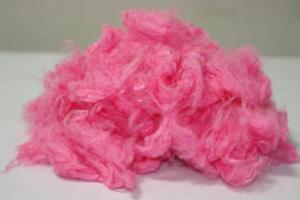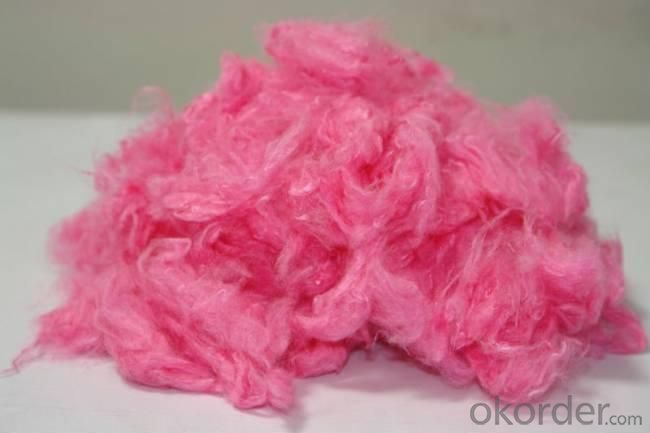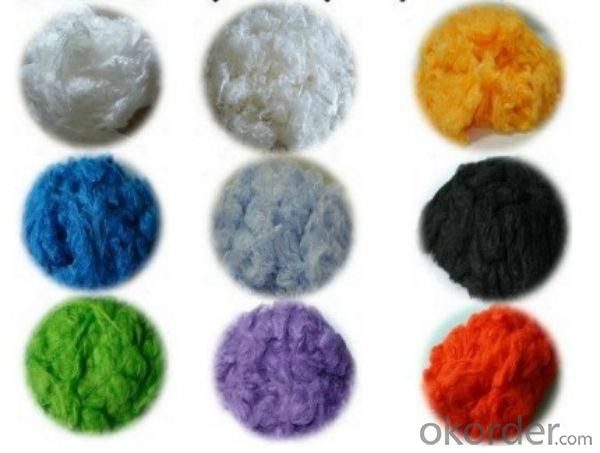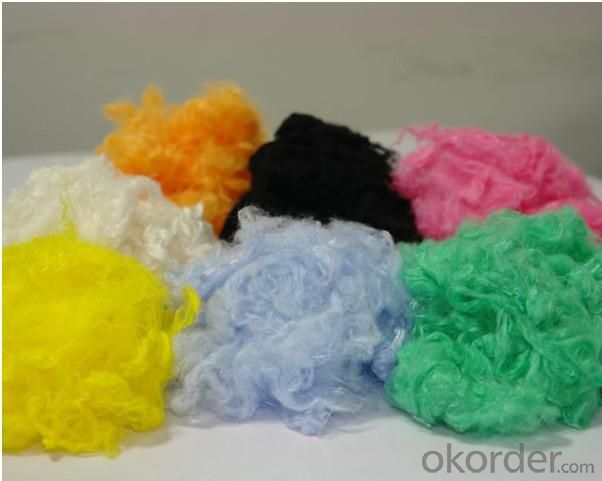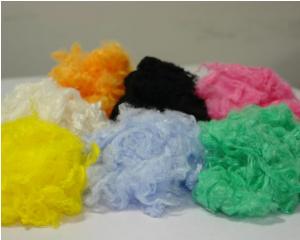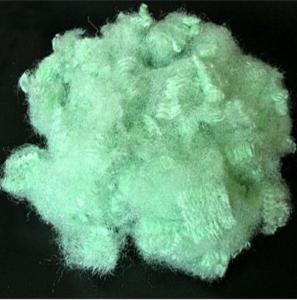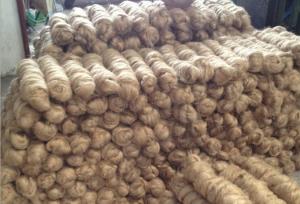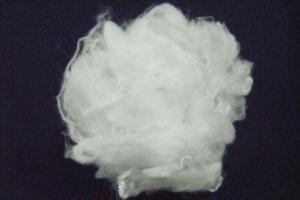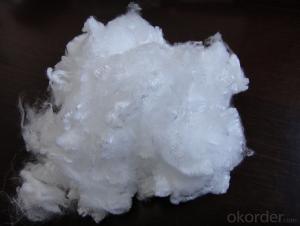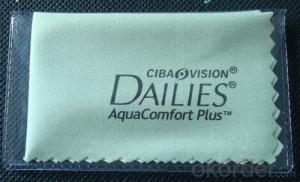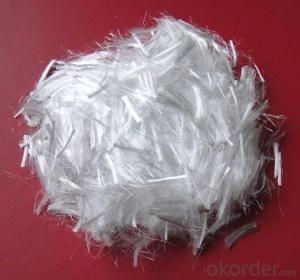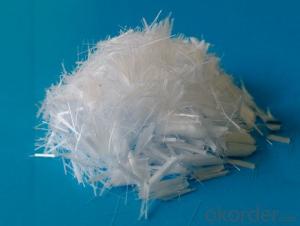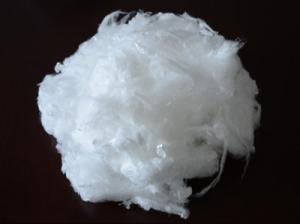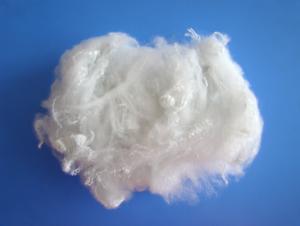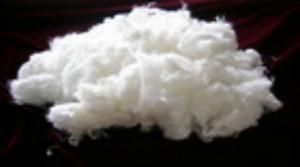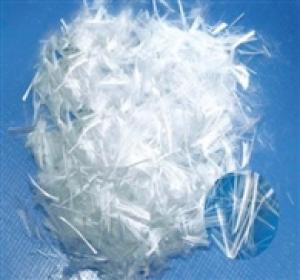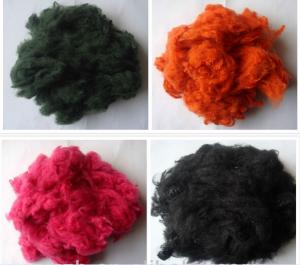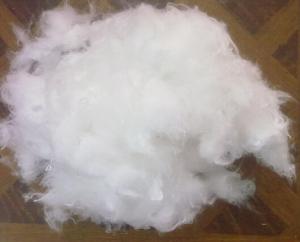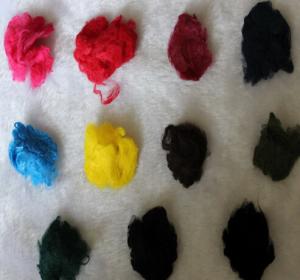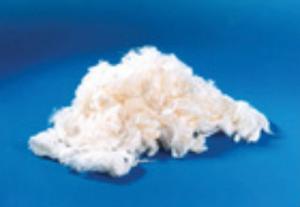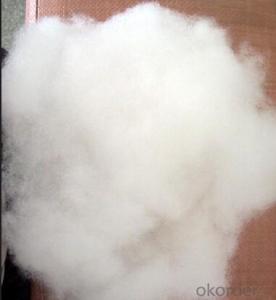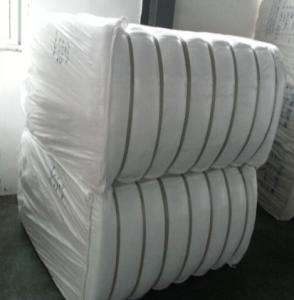Viscose Staple Fiber
- Loading Port:
- China Main Port
- Payment Terms:
- TT or LC
- Min Order Qty:
- 1 TON m.t.
- Supply Capability:
- 2000 Tons Per Month m.t./month
OKorder Service Pledge
OKorder Financial Service
You Might Also Like
Description of Viscose Staple Fiber:
Viscose Staple Fiber (VSF), a natural, bio-degradable fiber with characteristics somewhat similar to cotton is obtained from wood pulp or cotton pulp. As an extremely versatile and easily blendable fiber, VSF is widely used in apparels, home textiles, dress material, knitted wear and non-woven applications. Our 100% viscose staple fiber is available in bright, semi-extinction, high white, high strength short as well as various lengths.
Material: 100% Viscose
Fiber Type: Staple
Pattern: Dyed
Feature: Flame Retardant, Anti-Bacteria, Other Use: Spinning, Weaving
Place of Origin: Shanghai China (Mainland)
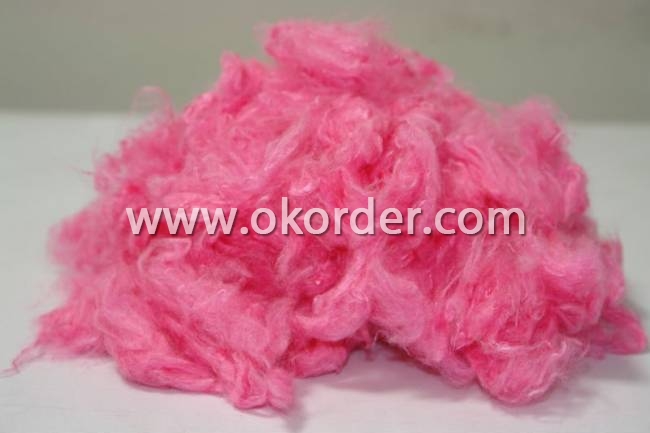
Sizes available:
1) 1.33dtex(1.2D) x 32mm
2) 1.33dtex(1.2D) x 38mm
3) 1.56dtex(1.4D) x 38mm
4) 1.67dtex(1.5D) x 38mm
5) 2.22dtex(2D) x 38mm
6) 2.22dtex(2D) x 51mm
7) 2.78dtex(2.5D) x 51mm
8) 2.78dtex(2.5D) x 62mm
9) 3.3 ~ 5.6dtex (3 ~ 5D)
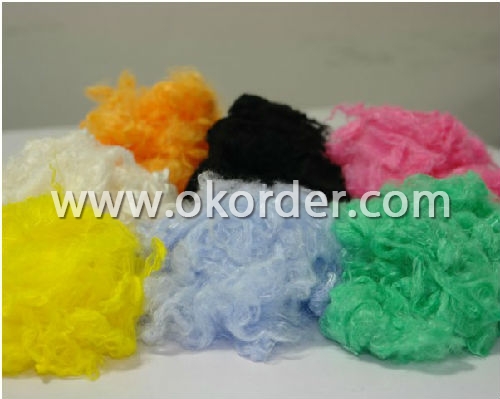
- Q: The characteristics of modal fiber!
- Modal fiber has the strength and toughness of synthetic fiber, dry and strong 35.6cn/tex, wet strength of 25.6cn/tex. The strength is higher than that of pure cotton and polyester cotton, which reduces the breakage in processing.
- Q: Which material is good, cotton blended or synthetic?
- From the material, cotton (natural fiber best), blending, followed by the poor purification of fiber.But there are a variety of fabric style and function of all kinds of fabrics, from dress up, suggest or with cotton and other natural fiber, natural fiber from the nature, with good skin, comfortable; chemical fiber fabrics from raw materials are synthetic, wearing skin, sweat less, but wear solid, etc., can be processed to form many kinds of clothes.
- Q: 70% cotton 27% polyester fiber 3% spandex what fabric is it?
- Woven fabric: 70% cotton yarn is 27% polyester fiber (it is often said that the polyester blended spandex elastic yarn), plus 3%, there may be a cotton yarn and polyester yarn weaving, there may be plain, twill or other organizations, these are not set down;
- Q: What's the difference between polyester and Korean silk?
- The disadvantage is poor heat resistance, high temperature, can not use high temperature ironing, South Korea made silk shirt, after sweating is not easy to stick in the body, sweat absorbing performance is poor, but it would be more elegant, the sharp objects to scrape off the wire easily.In addition: Korean silk is the chemical fiber produced in Korea, the grade is quite low.
- Q: Polyester fiber can be worn next to it?
- Yes, you can wear it, but it's just uncomfortable.Polyester is polyester, do not sweat, airtight, close to wear hot, wet after sweating feeling. noPure cotton comfort.
- Q: What's the difference between natural fiber and chemical fiber?
- A chemical fiber is a fibrous object made by artificial processing, and a chemical fiber can be divided into two categories: man-made fiber and synthetic fiber.1. man-made fibres, artificial fibres, also called recycled fibers, are fibers made from natural polymers or fibers that lose the value of textile processing. It includes synthetic cellulose fiber, artificial protein fiber, artificial inorganic fiber and artificial organic fiber.The man-made cellulose fibers: viscose, acetate fiber etc..The artificial protein fiber: soybean fiber, peanut fiber etc..The man-made mineral fibre: glass fiber, metal fiber, carbon fiber and so on.The synthetic organic fiber: chitin (crab shell) fiber, seaweed glue fiber etc..
- Q: Fiber cotton, doll cotton, sponge difference
- Sponges: most of the ingredients is polyurethane with foaming manufacturing technology will be the same as different materials have different things, with thermal insulation, sound absorption, shock absorption, flame retardant, antistatic, breathable and good performance characteristics.
- Q: Nitrocellulose (collodium) toxic?
- Low nitrogen nitro fiber, soluble in ethanol and ethyl ether mixed solvent, can be used as food sealing glue, such as soy sauce, vinegar, liquefied petroleum gas sealing glue, harmless to human body. In addition, the nitroglycerin with similar composition as available, Kyushin Pills can take. Therefore, non-toxic to the human body, there is no accumulation of sexual hazards
- Q: What is the difference between regenerated fibers and Lesel fibers?
- The development of regenerated cellulose fiber can be divided into three stages on the whole, forming the three generation products. The first generation was the ordinary viscose fiber, which was released in the early twentieth Century to solve the cotton shortage. The second generation was started in 1950s to realize industrialized production of high wet modulus viscose fiber, its main products include Japan R & D toramomen (named Polynosic) and the change of American R & D high wet modulus fiber HWM and Lenzing Co in late 80s by the new process of production of Modal fiber. In late 60s, due to the rapid development of synthetic fiber production technology, low cost and adequate sources of raw materials, synthetic fibers have greatly affected the market position of regenerated cellulose fiber. Many research institutions and enterprises to pay more attention to the development and application of new synthetic fiber. During this period, the development of regenerated cellulose fibers in the world tended to be stagnant. Third generation products are introduced in 1990s staple fiber Tencel (Tencel), filament Newcell as a representative. Influenced by the awareness of health and environmental protection, nature and other factors, people have a new understanding of the physicochemical properties of regenerated cellulose fiber, a new generation of regenerated cellulose fibers has been fully improved, therefore, the application of regenerated cellulose fibers of the re emergence of rapid development.
- Q: What is the difference between bamboo charcoal fiber and bamboo fiber?
- Compared with the advantages of bamboo fiber, bamboo fiber is more obvious, the function is better. Because the bamboo fiber is embedded in the nanometer bamboo charcoal fiber, making the function fully reflected in the bamboo charcoal with super adsorption odor, negative ion emission concentration is higher than 6800 /cm3, the concentration of negative ions is equivalent to the outskirts of the field, with a delicate fragrance, antibacterial and bacteriostatic, shielding electromagnetic wave radiation, infrared emission, heat insulation, temperature and humidity regulation, achieve dehumidification and drying effect, mineral potassium, sodium, calcium, magnesium, iron, manganese, silicon and germanium content is high, special health function to the human body. The fibers can be made of medical protection pregnant women and infant clothing, protective clothing, bedding, clothing fabric, high-grade hotel and household goods, travel and other transportation decorative items, can also be air filtration materials, household appliances, anti electromagnetic radiation .
1. Manufacturer Overview
| Location | Jiangsu,China |
| Year Established | 2003 |
| Annual Output Value | US$10 Million - US$50 Million |
| Main Markets | 68.00% Domestic Market 7.00% Eastern Europe 5.00% Mid East 4.00% Western Europe 3.00% South America 2.00% Southern Europe 2.00% Southeast Asia 2.00% South Asia 2.00% Africa 2.00% North America 1.00% Eastern Asia 1.00% Central America 1.00% Northern Europe |
| Company Certifications |
2. Manufacturer Certificates
| a) Certification Name | |
| Range | |
| Reference | |
| Validity Period |
3. Manufacturer Capability
| a) Trade Capacity | |
| Nearest Port | shanghai,ningbo |
| Export Percentage | 51% - 60% |
| No.of Employees in Trade Department | 6-10 People |
| Language Spoken: | English, Chinese |
| b) Factory Information | |
| Factory Size: | 30,000-50,000 square meters |
| No. of Production Lines | 4 |
| Contract Manufacturing | OEM Service Offered Design Service Offered Buyer Label Offered |
| Product Price Range | High and/or Average |
Send your message to us
Viscose Staple Fiber
- Loading Port:
- China Main Port
- Payment Terms:
- TT or LC
- Min Order Qty:
- 1 TON m.t.
- Supply Capability:
- 2000 Tons Per Month m.t./month
OKorder Service Pledge
OKorder Financial Service
Similar products
Hot products
Hot Searches
Related keywords
